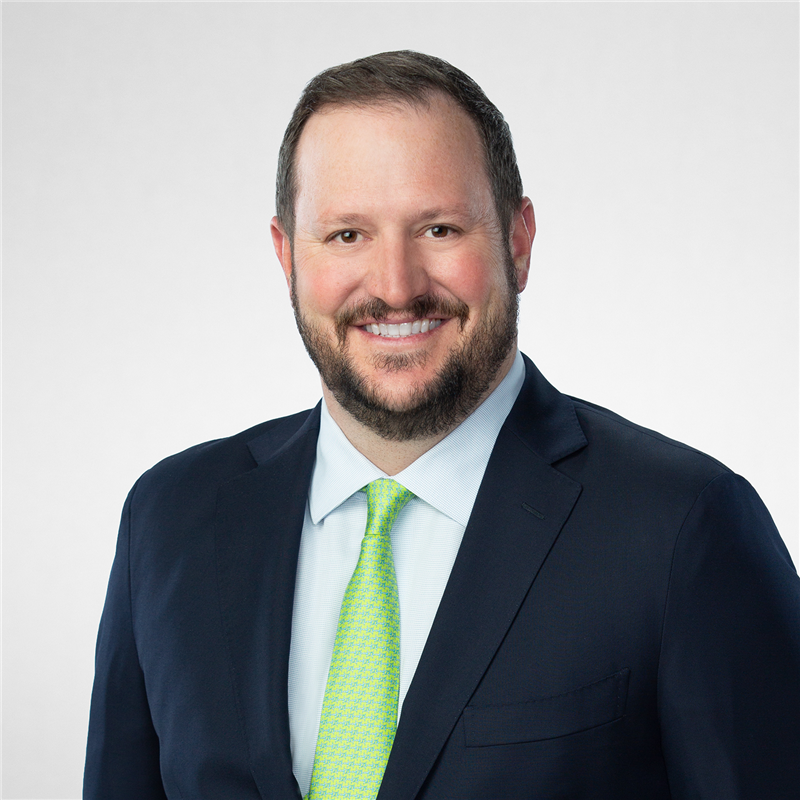CAZ Investments eyes long-term tailwinds in sports, GP stakes with Arctos, Blue Owl
- CAZ pursues thematic approach, partners with leading sponsors
- GP stakes largest strategy, followed by pro sports
- Houston-based firm also invests in energy, private credit among other areas
Since the National Football League (NFL) finally opened the door to private equity investment last year, the fortunes of the four initially approved investor groups have varied.
While two are yet to strike a deal, Arctos, a sports-focused investment firm, has been first out of the blocks. In May, the NFL granted it approval to invest in the Los Angeles Chargers, following the sponsor’s investment in the Buffalo Bills franchise in December.
Arctos’ early success in the race to invest in the NFL comes as no surprise to CAZ Investment, a Houston-based investment firm that counts professional sports as one of its core strategies and is a significant LP. To date, CAZ has committed around USD 1bn to professional sports, with Dallas-based Arctos at the top of its list.
“Our largest focus has been Arctos based in part on their clear market leadership,” Matthew Lindholm, a partner at CAZ told Mergermarket.

Matthew Lindholm, partner at CAZ Investments.
Founded in 2019, Arctos last year announced the close of its second flagship sports-dedicated fund on about USD 4.1bn. The sponsor has invested in leading teams in several major sports globally, including Paris Saint-Germain, the Golden State Warriors, and Liverpool Football Club, via a minority stake in owner Fenway Sports Group.
Investments in pro sports represent CAZ’s second biggest strategy, after GP stakes. As well as Arctos, it has backed Blue Owl’s HomeCourt Partners, which invests in National Basketball Association (NBA) teams, holding stakes in the Atlanta Hawks and Sacramento Kings.
CAZ’s attraction to sports stems from a belief that the sector is poised to benefit from long-term tailwinds. This can be explained by the trend of so-called “cord-cutting,” which sees customers canceling cable subscriptions in favor of streaming services, making them harder to reach for advertisers.
Sporting events are one of the last bastions of the TV market that isn’t in decline, thanks to unparalleled customer loyalty. “Sports fans are called fanatics for a reason,” said Lindholm.
As for the leagues themselves, he credits the NBA with having done a great job in broadening its appeal internationally. The NFL, meanwhile, is the shiny new toy for private capital, making it “both exciting and also a bit more of an unknown.”
Apart from Arctos’ investments in the Chargers and Bills, the only other deal to be announced so far was Ares Management’s acquisition of a 10% stake in the Miami Dolphins, also in December.
Neither of the remaining two groups – Sixth Street and an investor consortium originally comprising Carlyle, Blackstone, and CVC among others – has so far found a deal. According to recent reports, Blackstone and CVC have dropped out of the latter consortium.
Lindholm expects deal flow to continue to grow. As of now, the approved firms are only authorized to take a minority stake of up to 10% in NFL franchises. Longer-term, Lindholm estimates the investor groups could end up with four to six franchise investments each, provided deals can be found that work for everyone.
“There are teams out there that would welcome both capital and operational expertise,” he said.
Taking a stake
Investing in pro sports is a far cry from CAZ’s origins. Founded in 2001 by Christopher Zook, who is today its chairman, the firm initially resembled a multi-family office. In 2007, at the dawn of the global financial crisis, its strategy started to shift when Zook saw an opportunity to short the housing market. He teamed up with legendary hedge fund investor John Paulson, launching a dedicated vehicle.
Lindholm joined in 2014. Since then, CAZ has invested in a broad array of areas, including healthcare royalties, disruptive technology, enterprise software, and energy, as well as sports and GP stakes.
Strategically, it takes a long-term view, identifying themes that it believes will remain relevant for 5, 10, or even 15 years. An investment committee meets weekly to discuss everything from high-level themes to execution and holds quarterly discussions to review existing themes.
“If we’re going to participate in something in the private markets, longevity and staying power are key factors,” said Lindholm. “Once we identify a tailwind, we seek out the best sponsor or internal team to capitalize on the theme in the best risk-adjusted way.”
This approach was in evidence in 2015, when CAZ made its first move in an emerging asset class that has since become its largest strategy, accounting for around half of the around USD 10bn it has currently invested: GP stakes. The thinking behind this theme is that as private markets develop, so does the need for liquidity solutions and strategic capital.
“The concept behind investing in GP stakes isn’t just about the stakes themselves,” explained Lindholm. “It’s driven by the broader theme of private market growth.”
In line with its approach of partnering with market leaders, CAZ has a longstanding partnership with Blue Owl and its predecessor, Dyal Capital Partners.
CAZ allocated approximately USD 160m to Dyal’s Fund III, which closed on USD 5.3bn in 2017, having invested in sponsors including Vista, Encap, Silver Lake and KPS. It followed this up with an investment of around USD 180m-USD 200m in Fund IV, which closed in 2019 on USD 9bn. GP stakes investments from that vehicle included Clearlake, Golub Capital, Bridgepoint, and Owl Rock.
A year later, Dyal, which was a division of Neuberger Berman, combined with Owl Rock to form Blue Owl, with the new entity listing on the New York Stock Exchange via a merger with a special purpose acquisition vehicle (SPAC), Altimar.
Since then, CAZ has written around USD 1bn in LP checks for both of Blue Owl’s latest GP stakes vintages: Dyal Capital Fund V, which closed on USD 12.9bn in January 2023, and Blue Owl GP Stakes VI, which the sponsor expects to close in early 2026, as previously reported by Mergermarket.
Blue Owl focuses on the top end of the market, investing largely in managers with over USD 10bn in assets under management (AUM). In the middle market, which CAZ defines as managers with between USD 1bn to USD 10bn in AUM, it partners with Bonaccord Capital Partners. It invested around USD 600m in Bonaccord’s Fund II, which closed on USD 1.6bn in January, making it the fund’s largest investor.
The fund at that time had made investments in GPs, including Park Square Capital, Trivest Partners, Shamrock Capital, VMG Partners, Revelstoke Capital Partners, and Kayne Anderson Private Credit. “We see a lot of parallels between this team and what we saw in Blue Owl years ago,” said Lindholm.
GP diversification
From a portfolio perspective, Lindholm views the middle market as carrying more risk than the larger cap space but also argues that it offers more return potential. This can in part be attributed to volume; there are roughly 1,000 mid-market GPs, versus only 200 large-cap managers.
While the fundraising challenges faced by some mid-market managers have been widely broadcast, Lindholm suggests the reality is more nuanced, arguing some successful GPs have simply chosen not to scale too quickly.
For those that are struggling, however, GP stakes investors can add value. For instance, they can help managers tap into international LP relationships in Europe, the Middle East, and Asia Pacific, or help them assess how to leverage the growing private wealth channel.
Moreover, there are also opportunities to back emerging managers at a time when, though the fundraising market may be constrained, there is no dearth of quality.
“In private equity, high-level professionals often spin out of established firms to launch their own businesses,” said Lindholm. “They bring strong track records but need capital to start.”
The approach to backing emerging managers typically involves participating in Fund I as an LP, while also acquiring a stake in the GP. The upside in backing a successful GP from Fund I to maturity can be significant. Moreover, the GP stakes strategy overall benefits from downside protection via long-term contractual fees.
CAZ notably made a USD 200m commitment to Grafine Partners’ inaugural fund, which closed last year on USD 600m. At the time, Grafine, founded in 2019 by former Riverstone partner Elizabeth Weymouth, had itself invested in three first-time managers.
Overall, diversification is key. CAZ has exposure to roughly 100 GPs: 50% is in private equity; roughly 35%-40% is in private credit, and about 10% is in real assets.
“We think it makes a lot of sense to work with large managers, as they continue to grow,” said Lindholm. “That said, balance is important – diversifying across private equity GPs, private credit GPs, and even infrastructure, real estate, and real assets-focused GPs.”
CAZ has invested directly in GPs in a few select cases, but does not see this as its role in the wider ecosystem, preferring to invest in the funds of its partner sponsors. “We view ourselves as a large and hopefully sophisticated capital provider to the space,” added Lindholm.
Broader horizons
Meanwhile, one of the surest signs that GP stakes have fully matured as an asset class is the emergence of a secondaries market. CAZ is an active buyer, seeing and assessing regular LP-led deal flow that can vary dramatically in size, from USD 5m at the lower end to over USD 500m.
“The market has consistently demonstrated that when you own a great asset, liquidity solutions emerge,” said Lindholm.
Outside of GP stakes and pro sports, other themes include energy. Interest in the sector is driven by rapidly steepening demand, which CAZ believes will continue to grow for decades and must be met via both traditional and alternative sources.
CAZ takes an all-of-the-above approach when it comes to allocating capital, even leveraging its Texas roots to invest materially in traditional upstream oil and gas.
That said, there is also interest in new technologies that support alternative energy sources, with the potential return of nuclear energy an opportunity that it is currently evaluating. Energy-focused sponsors it has backed, via GP stakes and as an LP, include EnCap Investments and Quantum, both also based in Houston.
CAZ is also active in private credit, which accounts for around 5% of its portfolio, discounting GP stakes, and up to 20% if investments in private credit via GP stakes are included. Lindholm estimates CAZ has committed around USD 300m-USD 500m to private credit since 2014.
Looking ahead, he is bullish on the asset class, notwithstanding a potential rise in the default rate for private credit funds. “There may be challenges in private credit due to macroeconomic trends, but we think the risk-adjusted return remains highly compelling,” he said.
Across its strategies, CAZ is placing a growing emphasis on co-investing, adopting a flexible approach that varies depending on the extent of its LP relationship. In cases where it has made a significant LP commitment to a fund, for instance, it may set up a co-investment pool alongside it to participate directly in transactions.
“It’s highly sponsor-dependent,” said Lindholm.












